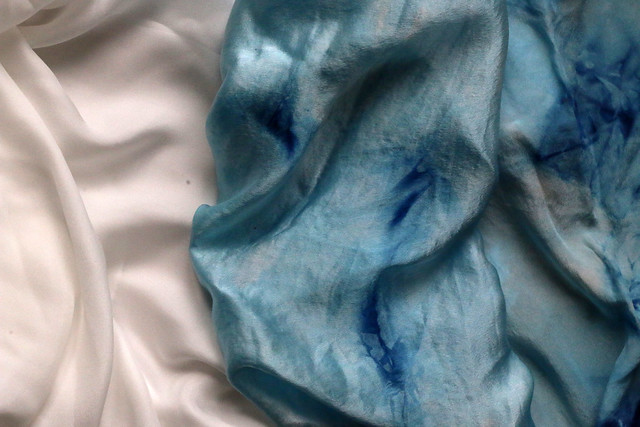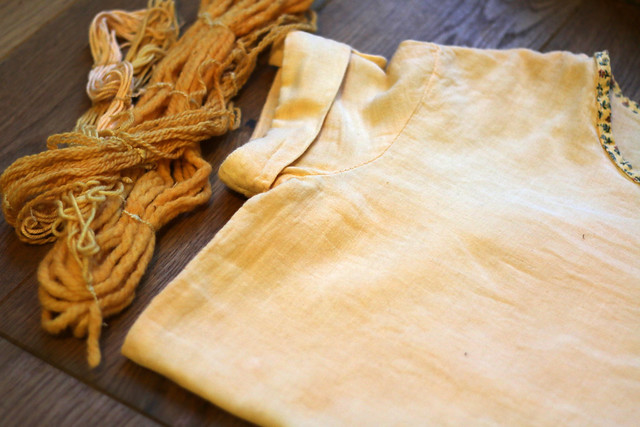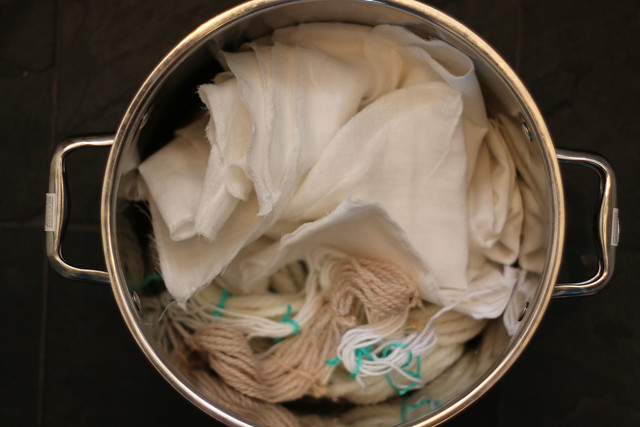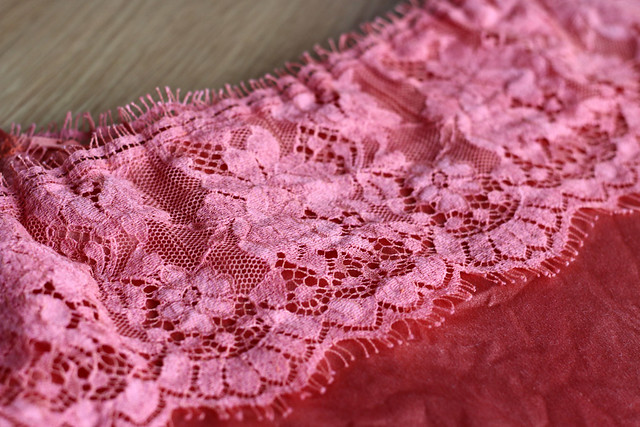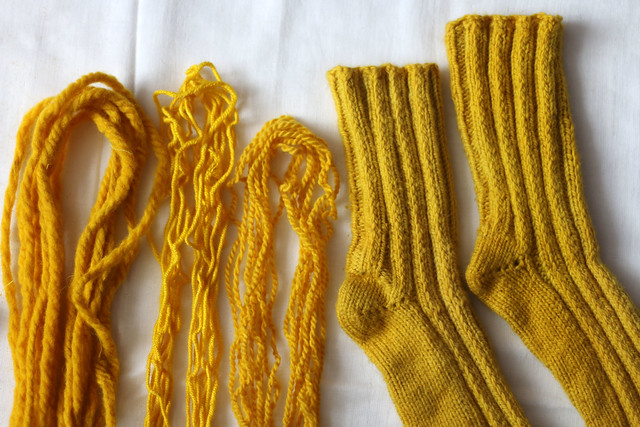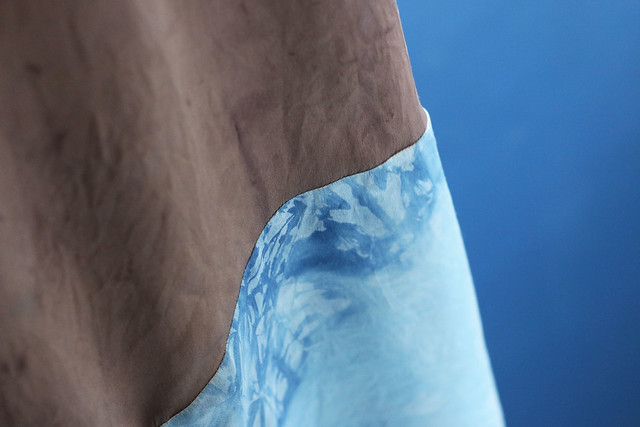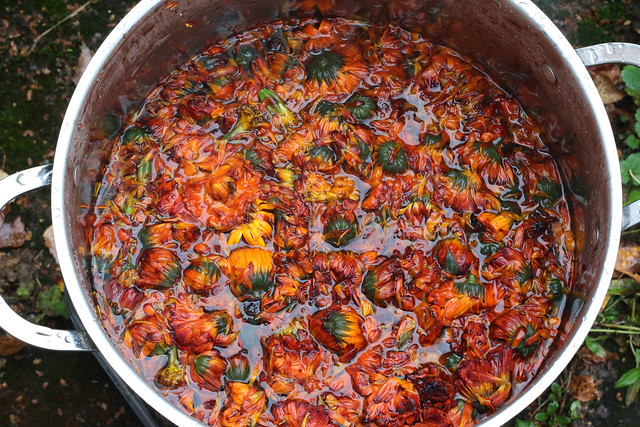Charlotte’s guide to Creating a Naturally Dyed Wardrobe

With #FashRevlast month and #MMMay16this month, the sewing community has been thinking about ‘Who made my clothes?’ and often the answer is, well I made my own clothes. We know that knowing who made your clothes is one of the reasons why many of you sew but making ethically and eco conscious choices doesn’t stop there, we also need to think about where and how our fabrics were made.
I think in the sewing industry it’s really difficult to find out where your fabrics came from and how they were made. It’s rare to see this information on labels in shops or online. It’s not just the conditions of workers who made your clothes we should be concerned about but also the people who make and print the fabrics we use. Harsh chemicals can be used to create some of the prints we love so much and I think as a community we need to start asking more questions about this, for the benefit of the people who work to product these products and our environment. There are some well known brands that use low impact dyes and organic cottons, such as Birch Organic Fabrics and Cloud 9 organics and these are becoming increasingly easier to buy in the UK from independent fabric shops.
There is an alternative option where you can be sure of how your fabrics were coloured and that’s to dye them yourself. Charlotte, who blogs at English Girl at Home, set herself a challenge last year to dye her own fabrics using natural ingredients #naturallydyedwardrobe. We asked Charlotte to tell us more about the processes involved and why she wanted to challenge herself. Charlotte has also kindly included recipes and further reading if you want to give it a go yourself!
At the start of 2015 I set myself a #naturallydyedwardrobe challenge, to experiment with natural dyeing as part of my dressmaking.
What are natural dyes?
Natural dyes are dyes produced from organic matter, including flowers, leaves, fruit, vegetables, roots, bark, nuts, seeds, and insects (e.g. cochineal).
The earliest examples of dyeing textiles with natural dyes, in Egypt, China, and India, date back to ancient times. Natural dyes that are still widely used today, such as madder, indigo, and weld, have been in common use since the medieval period.
Coventry (the city where I work) was famous for the production of woad-dyed blue cloth in the 1300-1400s. The reputation for colourfastness of this cloth is believed to be the origin of the term ‘true blue’; something that remains fast or true.
Why natural dyes?
Natural dyeing tends to be more common amongst knitters than sewists, possibly due to wool taking natural dyes more effectively than any other fibre. So I was excited about exploring natural dyes in the context of dressmaking and sewing. A number of fellow sewing bloggers have also been busy exploring natural dyes in the context of dressmaking and their local environments recently, including: Nicki, Sue, Carolyn, and Mari.
The reason I enjoy working with natural dyes (as opposed to synthetics) is that the colours produced are unpredictable, so the result is always exciting. Everything from the condition the plant grew in, water pH level, the fabric, and the ratio of plant material to fabric will have an impact on the colour produced.
The other exciting thing about natural dyeing is that you can try it with any plant material. Sticking to well-known natural dyes is more likely to result in a reliable colour, but you can use any plant material from your garden or kitchen cupboard (the most common colour produced is yellow). My local guild of Weavers, Spinners and Dyersran a year-long projectwith a local museum during 2015 where we used available plant material from the museum garden to dye wool. Many of the plants weren’t well-known dye plants, but all produced some form of colour.
Getting Started
If you’d like to try natural dyeing, the most important thing to know is that methods vary for cellulose (plant-based, such as cotton) and protein (animal-based, such as wool or silk) fibres.
In order to achieve a strong and long-lasting colour, it’s best to mordant your fibres before dyeing. Basic mordant recipes are outlined at the bottom of this post, along with a basic recipe for dyeing.
As a starting point why not try a readily available natural dye. Kitchen cupboard ingredients that make good dyes include turmeric, red cabbage, onion skins, tea, and coffee. Prolific plants such as ivy, bracken, acorn, nettles, and dandelions produce strong results, as do easy-to-grow flowers biden and marigold. You will need quite a large quantity to produce a strong colour; most books on natural dyeing will recommend that the weight ration between your plant material and fibre are equal or at least 50:1. However, I’ve achieved strong colors with much less (closer to 25:1 weight of plant material to fibre). Alternatively you can purchase natural dyes in powder form, where only a small quantity is needed; Wild Coloursis a good source of powdered dyes, as well as dye plant seeds.
If you do try natural dyeing, share your plans and progress using #naturallydyedwardrobe so I can follow along.
Further reading
There are lots of great natural dyeing books, my personal favourites are:
The Craft of Natural Dyeing, Jenny Dean
Natural Dyes, Linda Rudkin
Harvesting Color, Rebecca Burgess
Eco Colour, India Flint
The Modern Natural Dyer, Kristine Vejar
My own blog posts on natural dyeing can all be found here.
Recipes
Mordanting cellulose fibres: This recipe from The Craft of Natural Dyeingby Jenny Dean, uses alum (in powder form, available online) and washing soda. Dissolve 25g of alum for every 100g of fibre in a large pan of hot water, and then slowly add 6g of washing soda dissolved in water. Add your (pre-wetted) fibre and slowly heat the pan to 82-88ºC over approximately one hour. Remove the pan from the heat and leave the fibre to soak overnight. Finally, give the fibre a good rinse in cold water before adding it to the dye pan.
Mordanting protein fibres: This recipe recommended by my Guild, uses alum (in powder form, available online) and cream of tartar (available from the baking section of supermarkets). Dissolve 8g of alum and 7g cream of tartar for every 100g of fibre in a pan with a small amount of warm water. Add enough water to cover your fibre, and add your fibre to the pan. Place the pan on a low heat so that it reaches simmering temperature (approximately 82-88ºC) over an hour, and then maintain the heat for a further hour. Remove the pan from the heat and leave the fibre to soak overnight. Finally, give the fibre a good rinse in cold water before adding it to the dye pan.
Once your fibre is mordanted, you need to create a dye using your plant material, and add your fibre to it. A basic dye recipe is provided below:
To create a dye: place your plant material in a large (ideally stainless steel) pan with sufficient water to cover your fibre, and slowly bring the water to approximately 70-80ºC over a one hour period. While the pan is heating up, place the fibre in a bucket of cold water, so that it is suitably wet before being added to the dye pan. After an hour, the water in the pan should have taken on colour from the plant material. At this point the plant matter can be strained out if your prefer. Reduce the heat to 50-70ºC and add your pre-wetted fibre, maintaining the temperature for approximately an hour. At this point the fibre can be removed, or left to soak for longer, before being removed, and washed.
If you’d prefer to try dyeing with indigo, this requires a different process, the details of which can be found on my blog.
Thanks Charlotte for sharing your knowledge and tips about naturally dyeing fabrics, we can’t wait to try it out for ourselves!

